Hey fellow garden lovers! I’ve noticed lots of worried pet parents asking about Basket of Gold (Aurinia saxatilis) and its safety for dogs. As someone who grows these cheerful yellow flowers alongside my own pups, I’m happy to share some good news – Basket of Gold is completely non-toxic to our furry friends!
The Quick Answer
Basket of Gold is NOT poisonous to dogs. The ASPCA has officially listed this pretty perennial as safe for dogs, cats, and horses. You can breathe easy knowing your pup can romp around these plants without risk.
What Exactly is Basket of Gold?
For those not familiar with this garden beauty, here’s what you should know:
- Common names: Also called Gold Basket, Basket of Gold Alyssum, or Aurinia
- Size: Compact plant growing 6-12 inches tall and spreading 12-18 inches wide
- Appearance: Forms low-growing mounds with grayish-green foliage
- Flowers: Produces masses of bright yellow blooms in spring
- Growing zones: Hardy in USDA zones 3-7
Why Dogs and Basket of Gold Get Along
Here’s why I love recommending this plant to fellow dog owners
- Zero toxicity: Contains no harmful compounds that could hurt your pup
- Tough plant: Can handle some trampling from excited dogs
- Low maintenance: Doesn’t need chemicals or fertilizers that might harm pets
- Natural barrier: Great for edges where you want to keep dogs out of gardens
Growing Tips for Dog-Friendly Gardens
If you’re planning to add Basket of Gold to your dog-friendly garden, here’s what I’ve learned:
- Plant in full sun or partial shade in hot climates
- Ensure excellent drainage – soggy soil is a no-no!
- Space plants 12-18 inches apart
- Works great in:
- Rock gardens
- Border edges
- Between stepping stones
- Container gardens
Potential Minor Concerns
While Basket of Gold isn’t toxic there are a few tiny things to watch for
- Eating large amounts might cause mild tummy upset (like any plant)
- Yellow flowers might temporarily stain light-colored fur
- Plants can get damaged if dogs regularly run through them
Safe Alternatives and Toxic Look-alikes
Just because Basket of Gold is safe doesn’t mean all yellow flowers are! Here’s what to watch out for
Safe Yellow Flowers:
- Basket of Gold
- Wild Mustard
- Calendula
Toxic Yellow Flowers to Avoid:
- Daffodils
- Yellow Iris
- Yellow Jessamine
My Personal Experience
I’ve grown Basket of Gold in my garden for years with my two Labs running around, and we’ve never had any issues. The plants have survived countless games of fetch, and my dogs have occasionally nibbled the leaves with no problems whatsoever!
Final Thoughts
If you’re looking to add some spring color to your dog-friendly garden, Basket of Gold is a fantastic choice! It’s tough, pretty, and most importantly – completely safe for our four-legged friends. Just remember to:
- Plant in well-draining soil
- Give it plenty of sun
- Keep an eye on new puppies who might dig
- Enjoy those gorgeous yellow blooms!
Remember, while Basket of Gold is safe, it’s always smart to supervise pets in the garden and prevent them from making any plant their main course meal!
Have you grown Basket of Gold with dogs? I’d love to hear your experiences in the comments below!
Note: While we’ve done our research, always consult your vet if you’re concerned about your pet’s plant interactions!

Lily of the Valley
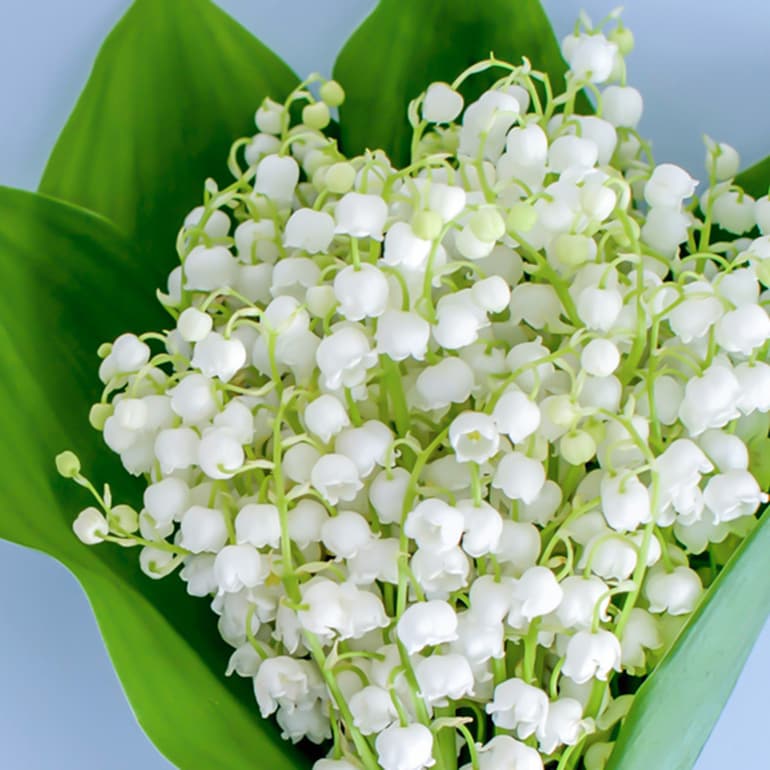
There are a ton of reasons why lilies of the valley are such popular garden plants: They are sweet-smelling; they have adorable, little white bell-shaped flowers; and they can thrive in shady places. But though they may be pretty, lilies of the valley are poisonous to dogs.
“Even a small exposure to any part of the plant can cause heart problems for dogs—changes in heart rate and rhythm,” Dr. Stern warns.
Eating a few leaves or bulbs can also lead to the following symptoms:
- Diarrhea
- Vomiting
- Low blood pressure
- Disorientation
- Seizures
- Coma
- Arrhythmia (irregular heartbeat)
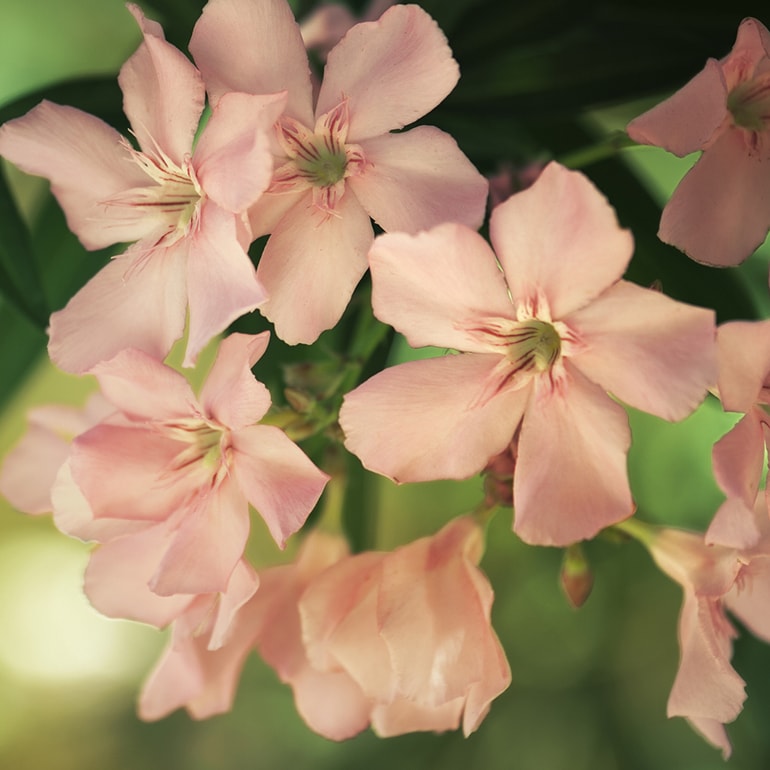
Oleander is a common landscaping plant, especially on the West Coast. This bushy shrub can grow as high as 12 feet, and it’s prized for its cluster of flowers in shades of yellow, white, pink, and red.
Every inch of this plant is poisonous to dogs—from the flower petals to the pointy, long leaves.
“Like lily of the valley, oleander also contains cardiac glycosides,” Dr. Stern explains, adding that symptoms can include:
- Changes in heart rate and heart rhythm
- Diarrhea
- Abdominal pain
- Drooling and excess salivation
- Possible death
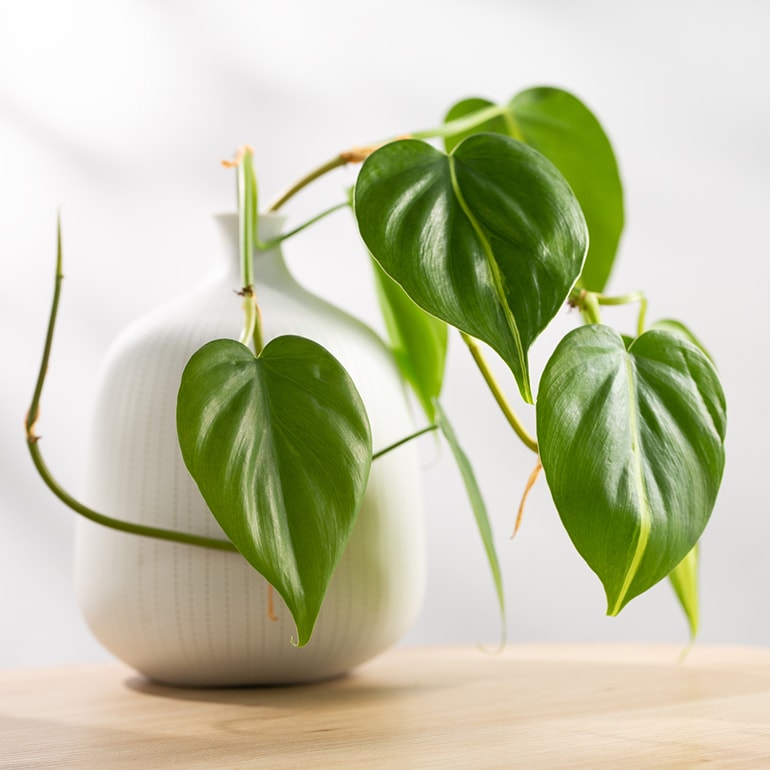
Philodendrons have heart-shaped leaves and long vines, and are a very popular houseplant. Beware, though: These plants contain insoluble calcium oxalate crystals, which can irritate your dog’s mouth and lips.
If they’ve swallowed some leaves, other symptoms include:
- Pawing the mouth
- Drooling
- Retching
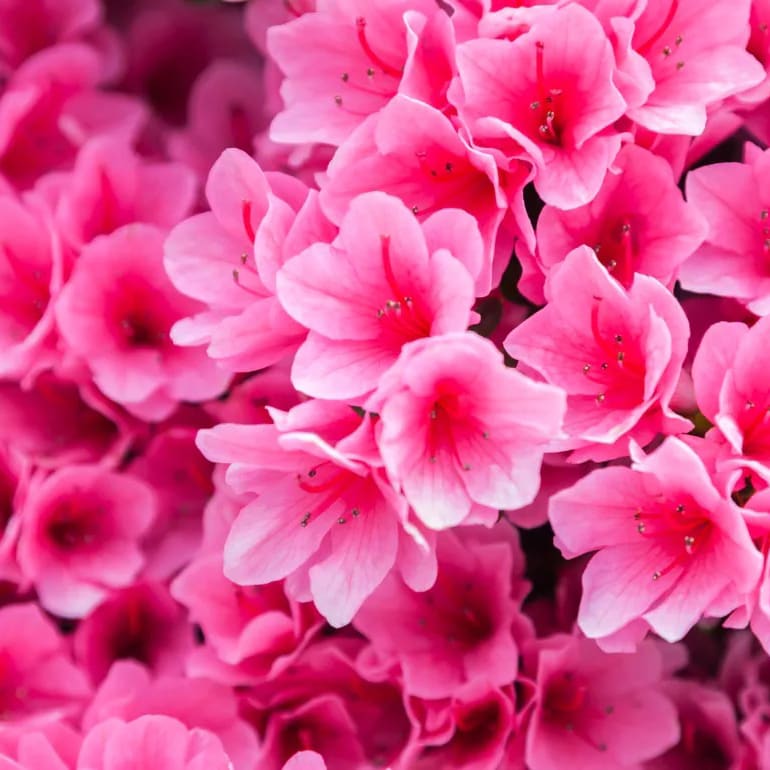
You see these flowering shrubs in many back and front yards across the country.
All parts of these flowering beauties contain grayanotoxin, and the reaction your pup gets depends on how much they’ve eaten.
“The most common sign with the ingestion of azaleas is stomach upset,” Dr. Stern says.
It’s very rare for dogs to eat a lot of azaleas, but when they do, they can get:
- Very weak
- Tremors
- Low blood pressure
- Irregular heart rate and rhythm
Complete List of Extremely Poisonous Plants for Dogs
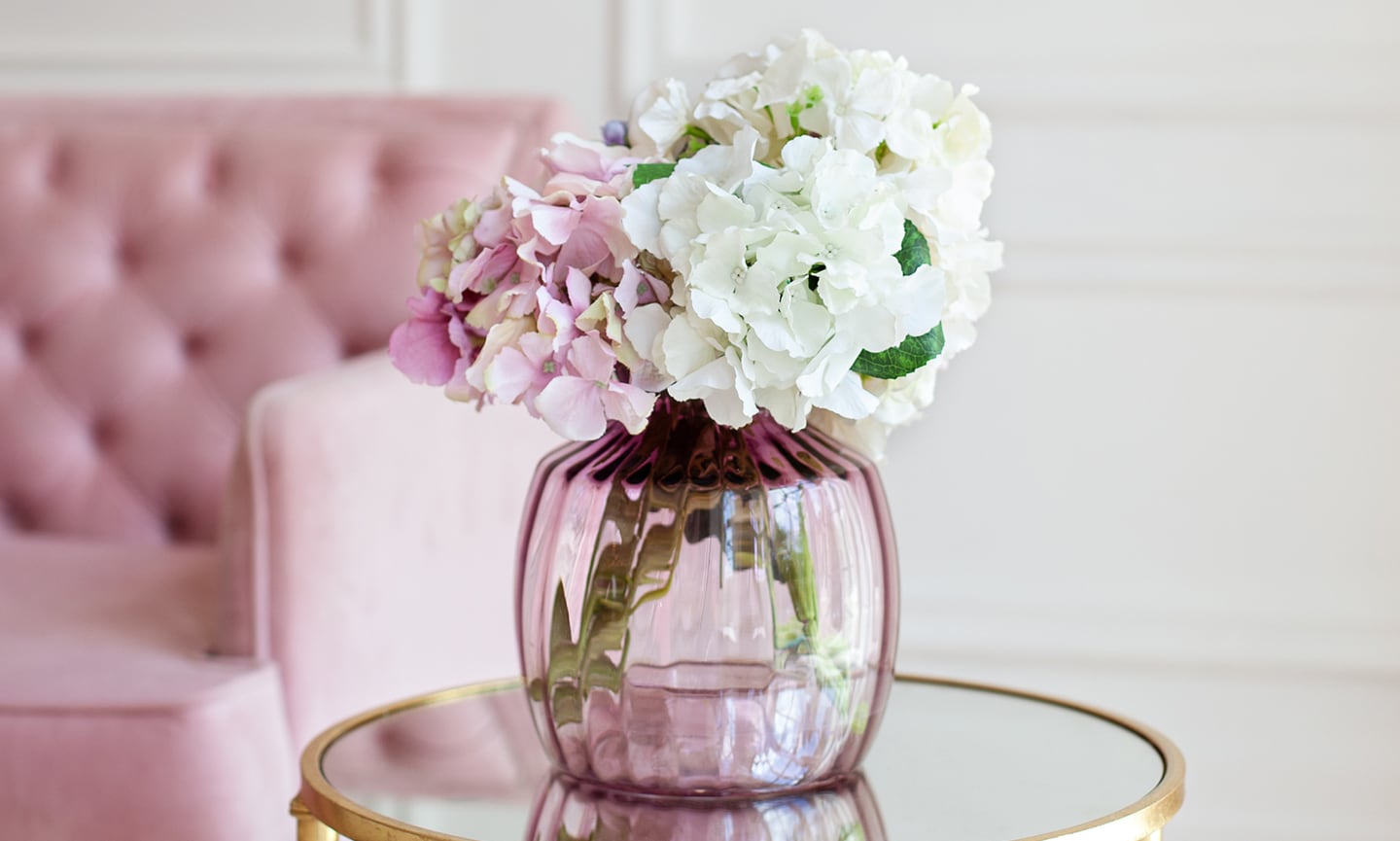
Any plant can upset your dog’s stomach, but toxic ones can produce severe symptoms, like intense vomiting or organ damage, depending on the plant and how much your pup ingests.
Here are all the plants known to produce the more serious side effects (you can also find a list with photos on the ASPCA’s website):
- Adam-and-Eve (also known as Arum, lord-and-ladies, wake robin, starch root, bobbins, cuckoo plant)
- African wonder tree
- Aloe
- Amaryllis (also known as belladonna lily, Saint Joseph lily, Cape belladonna, naked lady, Barbados lily)
- Ambrosia mexicana (also known as Jerusalem oak, feather geranium)
- American mandrake (also known as mayapple, Indian apple root, umbrella leaf, wild lemon, hog apple, duck’s foot, and raccoonberry)
- American mistletoe
- American yew (also known as Canada yew, Canadian yew)
- Apple (including crabapples; stem, leaves, and seeds contain cyanide, but the fruit is OK for dogs)
- Apricot (stems, leaves, and pit contain cyanide)
- Arrowhead vine (also known as Nephthytis, green gold naphthysis, African evergreen, trileaf wonder)
- Australian ivy palm (also known as Schefflera, umbrella tree, octopus tree, starleaf)
- Autumn crocus (also known as naked ladies)
- Azalea
- Baby doll ti plant (also known as ti-plant, good-luck plant, Hawaiian ti plant)
- Barbados pride (also known as peacock flower, dwarf poinciana)
- Barbados pride 2 (also known as bird of paradise, Poinciana, brazilwood)
- Begonia
- Bergamot orange
- Bird of paradise flower (also known as crane flower, bird’s tongue flower)
- Bishop’s weed (also known as false Queen Anne’s lace, greater ammi)
- Bitterroot (also known as dogbane hemp, Indian hemp)
- Bittersweet (also known as American bittersweet, waxwork, shrubby bittersweet, false bittersweet, climbing bittersweet)
- Black calla (also known as Solomon’s lily, wild calla, wild arum)
- Black laurel (also known as dog hobble, dog laurel, fetter bush, sierra laurel)
- Black walnut
- Bog laurel (also known as pale laurel)
- Borage (also known as starflower)
- Boxwood
- Branching ivy (also known as English ivy, sweetheart ivy, California ivy)
- Brunfelsia (also known as lady-of-the-night, kiss-me-quick, Franciscan rain tree)
- Buckwheat
- Burning bush (also known as spindle tree)
- Buttercup (also known as figwort)
- Butterfly iris
- Calamondin orange
- Calla lily (also known as trumpet lily, arum lily, pig lily, white arum, florist’s calla, garden calla)
- Caraway
- Cardboard palm (also known as cardboard cycad)
- Carnation
- Castor bean plant
- Chamomile
- Chandelier plant (also known as devil’s backbone)
- Cherry (stem, leaves, and pit)
- Chinaberry tree (also known as bead tree, China ball tree, paradise tree, Persian lilac, white cedar, Japanese bead tree, Texas umbrella tree, pride-of-India)
- Chinese evergreen
- Chinese jade (also known as silver jade plant, silver dollar)
- Chives
- Chrysanthemum (also known as mums)
- Clematis (also known as virgin’s bower)
- Clivia lily
- Coffee tree
- Coleus (also known as bread-and-butter plant, Spanish thyme, East Indian thyme)
- Corn plant (also known as dragon tree)
- Cow parsnip (also known as giant hogweed)
- Cowbane
- Cyclamen
- Daffodil (especially the bulbs)
- Dahlia
- Daisy
- Desert rose (also known as desert azalea, mock azalea)
- Deadly nightshade (also known as climbing nightshade, poisonous nightshade, woody nightshade, and blue nightshade)
- Dieffenbachia (also known as dumb cane)
- Dog daisy
- Eastern star
- Elephant ears (also known as taro, malanga, and Caladium)
- Elephant-ear begonia
- Emerald fern (also known as emerald feather, asparagus fern)
- Epazote (also known as Mexican tea)
- Eucalyptus
- Fetterbush (also known as maleberry, staggerberry)
- Fleabane (also known as horseweed, showy daisy)
- Florida beauty (also known as gold dust dracaena, spotted dracaena)
- Foxglove
- Gardenia (also known as Cape jasmine)
- Garlic
- Geranium
- Giant dracaena (also known as palm lily, grass palm)
- Gladiola
- Glory lily (also known as gloriosa lily, climbing lily, superb lily)
- Good luck plant (also known as golden bird’s nest, snake plant)
- Grapefruit (skin and plant parts; fruit isn’t toxic)
- Heavenly bamboo (also known as sacred bamboo)
- Hellebore (also known as Christmas rose, Easter rose)
- Holly (also known as American holly, English holly, European holly, Oregon holly, inkberry, winterberry)
- Hops
- Horse chestnut (also known as buckeye)
- Hosta
- Hyacinth
- Hydrangea
- Indian rubber plant (also known as fig, weeping fig)
- Iris (also known as flag, snake lily, water flag)
- Iron cross begonia
- Jack-in-the-pulpit
- Jade plant (also known as baby jade, dwarf rubber plant, Chinese rubber plant, Japanese rubber plant)
- Japanese yew (also known as Buddhist pine or Southern yew)
- Jerusalem cherry (also known as winter cherry)
- Jonquil
- Lambkill (also known as sheep laurel)
- Larkspur
- Laurel (also known as mountain laurel, bay laurel)
- Lavender
- Leek
- Lemon (skin and plant parts; fruit is non-toxic)
- Lemon grass
- Lemon verbena
- Lily of the valley
- Lily-of-the-valley bush (also known as andromeda japonica)
- Lime (skin and plant parts; fruit is edible)
- Lobelia (also known as cardinal flower, Indian pink)
- Locust
- Lovage
- Macademia nut
- Madagascar dragon tree
- Mapleleaf begonia
- Marijuana (also known as Indian hemp, hashish)
- Marjoram
- Mayweed
- Metallic leaf begonia
- Milkweed
- Mint
- Mole bean plant
- Morning glory
- Narcissus (also known as paper white)
- Nightshade (also known as black nightshade)
- Oleander
- Onions
- Orange (skin and plant parts; fruit isn’t toxic)
- Oregano
- Painter’s palette (also known as flamingo lily, flamingo flower, pigtail plant, and oilcloth flower)
- Parsley
- Peace begonia
- Peace Lily
- Peach (stem, leaves, and pit)
- Pencil cactus (also known as sticks of fire)
- Peony
- Periwinkle (also known as running Myrtle)
- Philodendron
- Plum (stem, leaves, and pit)
- Poinsettia
- Poison hemlock (also known as deadly hemlock, winter fern, California fern, Nebraska fern)
- Pothos (also known as golden pothos, taro vine, devil’s ivy)
- Prayer bean (also known as rosary bean, Buddhist rosary bean, Indian bean, Indian licorice)
- Prickly ash (also known as Angelica tree, prickly elder, Hercules’ club, devil’s walking stick)
- Primrose
- Privet (also known as wax-leaf)
- Purslane (also known as moss rose, rock moss)
- Ragwort (also known as golden ragwort)
- Ranger’s button (also known as swamp white heads)
- Red-marginated dracaena
- Red sage (also known as shrub verbena, Lantana, yellow sage)
- Rex begonia
- Rhubarb
- Sago palm
- Shamrock plant
- Skunk weed (also known as skunk cabbage, swamp cabbage, polecat weed)
- Sorrel
- Spring parsley
- St. John’s wort (also known as Klamath weed)
- Striped dracaena
- Sweet pea (also known as everlasting pea)
- Sweet William (also known as pinks)
- Tahitian bridal veil
- Tarragon
- Tobacco (also known as tree tobacco, mustard tree, Nicotiania)
- Tomato plant
- Tulips
- Wandering Jew
- Watercress
- Wisteria
- Yarrow (also known as milfoil)
- Yucca
10 Household Plants That Are Poisonous To Dogs!
FAQ
Are plants toxic to dogs?
Although many plants are considered toxic to dogs, the levels of danger they present vary due to the type of plant and your dogs’ body. Some plants, for example, induce mild symptoms while others may warrant immediate veterinary care. Common signs of consuming a toxic plant include:
Are Foxglove plants poisonous to dogs?
Foxglove: All parts of these tall beautiful flowers, from the seeds to the petals, are extremely toxic to dogs. Ingestion can cause cardiac failure and even death. Geranium: All varieties of this common container plant are poisonous to dogs. The symptoms include lethargy, low blood pressure, skin rashes, and loss of appetite.
Are peony plants toxic to dogs?
Peony: These gorgeous flowering plants contain the toxin paeonol in their bark. They may cause vomiting and diarrhea, if ingested in large amounts. Sago Palm: Often used as an ornamental shrub in temperate zones, it’s considered one of the most toxic plants for dogs. Every part of the plant is toxic, especially the seeds.
Are sago palms poisonous to dogs?
Its leaves and flowers are toxic to dogs, so be cautious if taking your pup near a friend or neighbor’s home with these decorative plants. Sago palm: This shrub may look harmless, but it is actually among the most toxic plants for dogs. Every part of the sago palm is poisonous, especially the seedpods.
Is Geranium poisonous to dogs?
Ingestion can cause cardiac failure and even death. Geranium: All varieties of this common container plant are poisonous to dogs. The symptoms include lethargy, low blood pressure, skin rashes, and loss of appetite. Iris: Ingesting any part of the plant can cause skin irritation, drooling, diarrhea, vomiting, and lethargy.
Which plants are safe for dogs?
Areca palm: If you’re looking to give your home a tropical feel, the areca palm is a beautiful and safe choice for dogs! Also known as the butterfly palm, this long-leaf plant grows best with plenty of sunlight. Baby rubber plant: The baby rubber plant has shiny leaves and makes a nice complement to rooms with indirect light.
